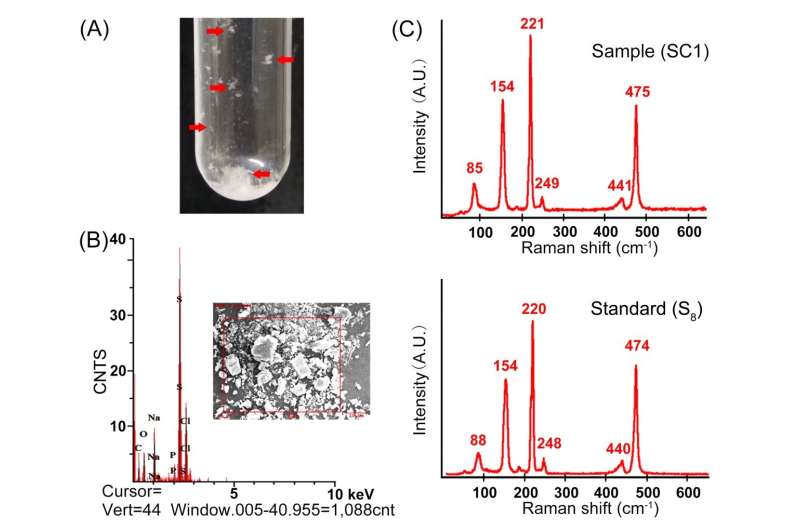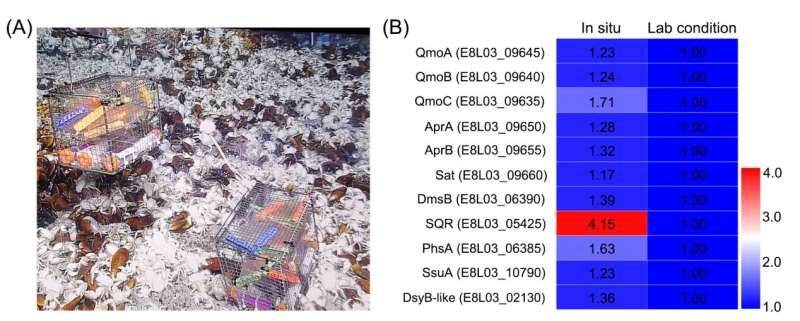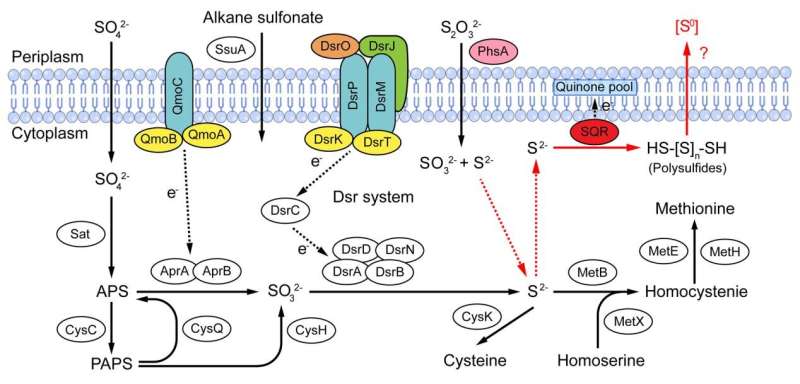Novel zero-valent sulfur production pathway found in deep-sea sulfate-reducing bacterium

Zero-valent sulfur (ZVS) is an important intermediate in the biogeochemical sulfur cycle, and it accumulates at sediment surfaces under the sea floor (including in cold seeps and hydrothermal vents).
In previous studies, production of ZVS as the intermediate has been regarded as a biosignature of sulfide-oxidizing microorganisms.
Recently, a research team led by Prof. Sun Chaomin from the Institute of Oceanology of the Chinese Academy of Sciences (IOCAS) reported a novel zero-valent sulfur (ZVS) production pathway in a deep-sea sulfate-reducing bacterium (SRB) via thiosulfate metabolism.
The study was published in mLife on Sept. 23.
The researchers isolated and cultured a typical SRB designated Oceanidesulfovibrio marinus strain CS1 from deep-sea cold seep sediments in the South China Sea, and found that strain CS1 could form ZVS in medium supplemented with thiosulfate.

They further revealed that thiosulfate reductase (PhsA) and the sulfide quinone oxidoreductase (SQR) played key roles in driving ZVS formation in O. marinus CS1 by proteomic and protein activity assays. In this process, O. marinus CS1 firstly reduced thiosulfate to form sulfide by PhsA, and then produced ZVS from sulfide oxidation by SQR.
The researchers placed and cultured this bacterium back to the deep-sea cold seep during the cruise of R/V KEXUE in 2020. When O. marinus CS1 was cultured for 10 days in a deep-sea cold seep, the expressions of PhsA and SQR were significantly upregulated, indicating that strain CS1 might form ZVS in the deep-sea environment.

It's worth noting that homologs of coding sequences (phsA and sqr) were widely identified from microbes living in sediments of deep-sea cold seep in the cold seep environment of South China Sea by the metagenomic analysis. "We thus propose that SRBs containing phsA and sqr genes potentially contribute to the formation of ZVS in deep-sea cold seep sediments of the South China Sea," said Liu Rui, first author of the study.
"Our findings provide new insight into a novel ZVS production pathway in deep-sea SRB, which are important for explaining the formation of ZVS in deep-sea cold seep sediment," said Prof. Sun.
More information: Rui Liu et al, A deep‐sea sulfate‐reducing bacterium generates zero‐valent sulfur via metabolizing thiosulfate, mLife (2022). DOI: 10.1002/mlf2.12038
Provided by Chinese Academy of Sciences




















